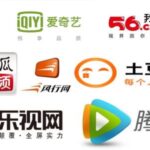What is dynamic pricing?
Dynamic pricing, also called real-time pricing, is an approach to setting the cost for a product or service that is highly flexible. The goal of dynamic pricing is to allow a company that sells goods or services over the Internet to adjust prices on the fly in response to market demands.
What are the advantages?
Online dynamic pricing can help businesses in a variety of ways. It creates efficient markets by providing a mechanism to eliminate imperfect information, by increasing the geographic reach of smaller suppliers, and by streamlining purchasing processes.
Dynamic pricing often is referred to as discriminatory pricing because it allows you to maximize profits with each customer. This approach is common in event promotions: If initial demand is low, facility or event managers work to sell off open seats to generate whatever revenue is possible. Another strength of dynamic pricing is the ability to adjust prices for service projects or products based on the time and costs involved or fluctuating demand. Seafood distributors and restaurants, for instance, often vary prices depending on season and inventory supply.
How does it work?
Well, dynamic pricing gives retailers the flexibility to decrease prices to increase sales when they’re sluggish and increase prices to generate more profit when they’re booming.
What are the benefits?
Many retailers opt for pricing intelligence software that has the ability to scan Amazon for thousands of products every 10 minutes, lifting the burden of manually tracking competitors.
Pricing intelligence software has already caught on as 22% of retailers have chosen to implement it. An additional 7% plan to start using it within the next six months and 36% in the next year.
This shouldn’t be surprising, since research has found that price optimization software improves gross margins by 10%.
Dynamic pricing also provides retailers with additional insights on market trends. Retailers can implement different price levels and observe price elasticities before finding the optimal market price.
Amazon, one of the largest retailers that uses dynamic pricing, changes its prices every 10 minutes on average. The company saw a 27.2% increase in sales from 2012 to 2013 and generated over $44bn in sales just last year. This resulted in Amazon being named one of the top 10 retailers in the US for the first time.
A leader in the loss-leader pricing strategy, Walmart, also changes its prices roughly 50,000 times a month. In 2013, its global online sales grew by 30%, a growth rate that topped Amazon’s for the first time in 5 years. Walmart’s success has continued well into 2014 with a 27% increase in global web sales in just Q1 alone.
Best Buy and Sears also incorporate dynamic pricing into their pricing strategies. Best Buy’s online sales increased by 25% in 2013 and has already seen a 20% increase in 2014. Sears also implemented price changes to about 25% of its products during the holiday season. It experienced a 17% increase in online sales in 2012.
As the eCommerce market becomes increasingly competitive, retailers need to be able to easily monitor their competitors and the market as a whole. Pricing intelligence software and dynamic pricing allow for this and incorporate other factors such as the level of demand and conversion rates.
TMO Group is a technology company providing eCommerce Solutions & Web Development. More information if you want, please send us an email!








